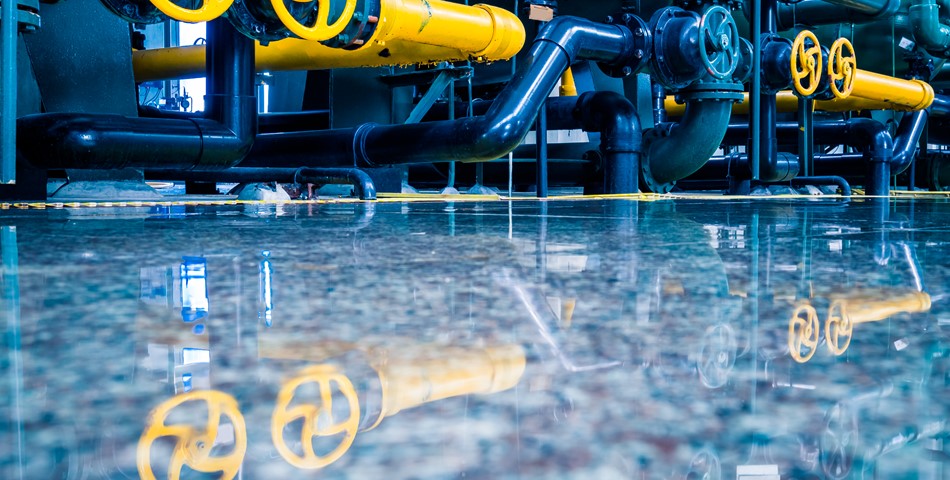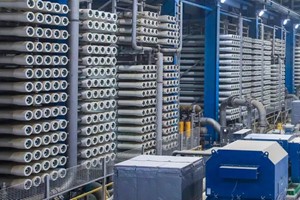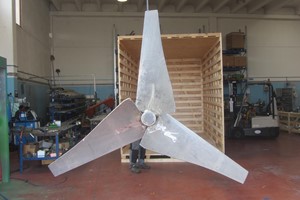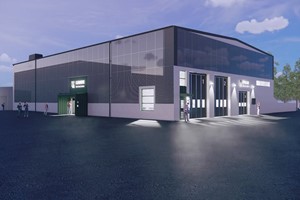Industrial wastewater regulations exist for a reason: to safeguard our drinking water sources. But meeting these Environmental Protection Agency (EPA) standards can be a challenge. Here's where Advanced Oxidation Processes (AOPs) come in. These powerful technologies offer exceptional benefits for industrial facilities, helping them achieve compliance and prevent harmful contaminants from reaching our waterways.
The AOP Showdown: Ozone vs. UV Light
When it comes to AOPs, two main contenders emerge: ozone and ultraviolet (UV) light. Let's break down how each works:
- Ozone AOP: This on-site generated treatment excels at eliminating a wide range of pollutants, from inorganic and organic compounds to harmful microbes. Ozone dissolves in water, forming powerful free radicals that effectively break down contaminants. It's the perfect choice for wastewater with low UV transmittance, high organic content, or when peroxide use is undesirable. Additionally, facilities already using ozone for other purposes can benefit from its AOP capabilities.
- UV AOP: This method utilizes UV light to disrupt the DNA of harmful organisms, rendering them inactive and unable to reproduce. UV AOP is particularly effective against contaminants like 1,4-dioxane and NDMA. There are two main types:
- UV/Hydrogen Peroxide: Here, hydrogen peroxide is added before the UV reactor. UV light splits the peroxide into hydroxyl radicals, which quickly attack pollutants in the water.
- UV/Chlorine: Chlorine reacts with water to form hypochlorous acid (HOCl), which breaks down into hydroxyl radicals under UV light. However, chlorine can hinder this process, making UV/peroxide generally more efficient, especially at higher pH levels.
Choosing Your AOP Champion: Beyond Technology
Selecting the right AOP goes beyond just technology. Here are some crucial factors to weigh:
- Energy Consumption and Costs: AOP systems vary in energy use. Evaluate the lifecycle cost to find the most economical option for your facility.
- Space Constraints: UV systems typically require less space than ozone systems. Consider your available footprint.
- Oxygen Availability: If your facility has an on-site oxygen supply, ozone AOP becomes more cost-effective.
- Existing Treatment Technologies: How will the AOP integrate with your current setup?
- Peroxide Costs and Disposal: For UV/peroxide systems, factor in the cost of peroxide and the method for handling any residuals.
The 1,4-Dioxane Dilemma: Why AOP is the Answer
1,4-dioxane is a highly soluble contaminant that evades traditional methods like Granular Activated Carbon (GAC) or air stripping. It even passes through reverse osmosis membranes. AOP is the most effective and feasible solution for tackling this persistent pollutant.
The Whole Effluent Toxicity Test: Protecting Aquatic Life
The National Pollutant Discharge Elimination System (NPDES) mandates Whole Effluent Toxicity (WET) tests for facilities discharging wastewater. These tests assess the impact of treated wastewater on aquatic organisms, ensuring the safety of our water ecosystems.
A Real-World Example: How AOP Saved the Day
A West Virginia manufacturing plant needed to reduce effluent toxicity and slash sludge disposal costs. GAC was too expensive, and UV wasn't suitable due to low UV transmittance and high organic content. In the end, ozone AOP emerged victorious. It effectively oxidized the toxicity-causing molecules, including surfactants, phenols, and even 1,4-dioxane. The results? A dramatic reduction in effluent toxicity and significant cost savings on sludge disposal.
Should You Pilot Test? Why It's Often Essential
Due to the complexities of water quality and the significant investment involved, piloting or laboratory testing is often mandatory for AOP systems. This crucial step helps determine the most effective method and ensures proper system sizing. Pilot testing also accounts for seasonal and weather variations that can affect water quality over time, allowing for adjustments to optimize treatment performance.
Choosing the Right AOP doesn't have to be a Mystery
By understanding the capabilities of ozone and UV AOP, along with the crucial factors to consider, you can make an informed decision. Remember, piloting or testing is often key to ensuring the chosen AOP delivers the best results for your specific wastewater treatment needs. With the right AOP in place, you can achieve compliance, protect the environment, and operate with peace of mind.
By Steve Martin














